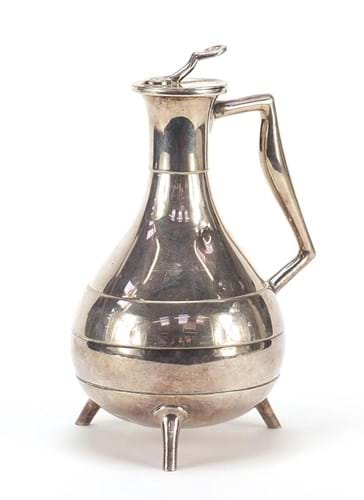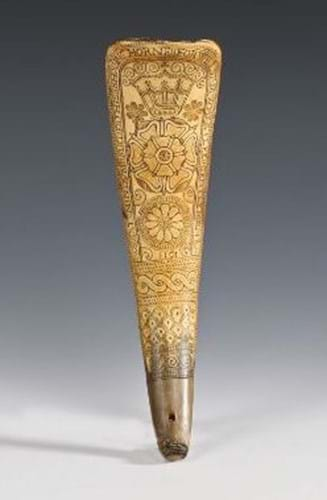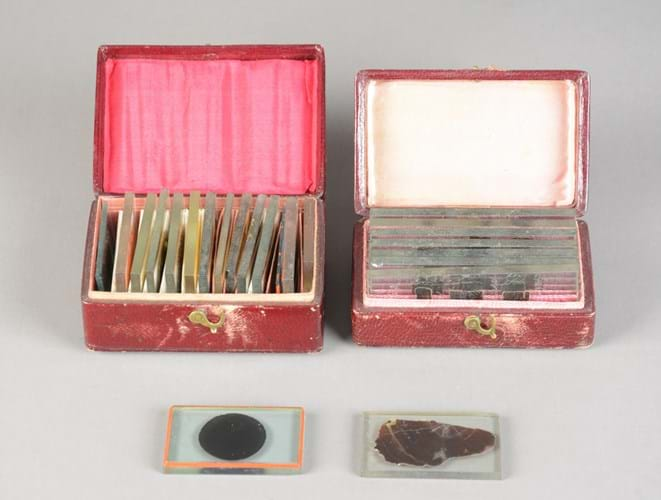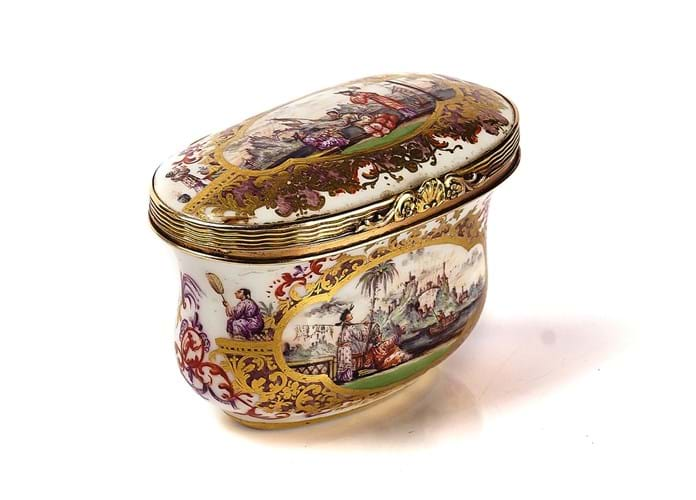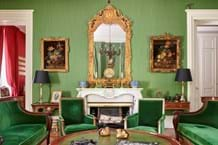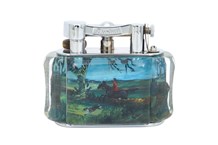1. Christopher Dresser jug
Christopher Dresser (1834-1904) designed two electroplated claret or water jugs for Elkington & Co of Birmingham in 1885 - both of them daring designs inspired by vessels from antiquity. Like many of most ambition ‘ahead of their time’ metalwork creations, they sold in only small quantities. The more commonly seen of the two, one that appears at auction perhaps once or twice a year, has a conical base (model number 17558) and the registered number 22872. Deciding on condition and decoration it can bring between £5000-15,000.
Much the scarcer model is this flask-shaped jug with the model number 17556 and the registration number 22871 (pictured above). Standing on three tripod feet, it has an unusual ‘coopered’ body with pronounced horizontal grooves where one band joins another. Another is in the Victoria & Albert Museum collection but this one emerged for sale at Eastbourne Auction Rooms where, although accurately catalogued and in decent condition, it carried a guide of just £50-100. On October 13 the guide was made to look more than conservative when the piece sold at £10,200.
2. Receipt to Captain Robert Scott
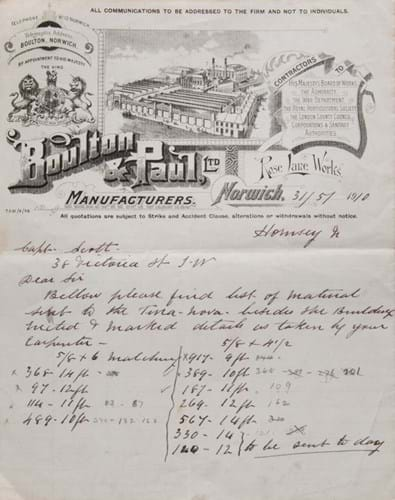
A receipt to Captain Robert Scott concerning supplies for the Terra Nova expedition - £2800 at Bearnes Hampton & Littlewood.
On October 19, Bearnes Hampton & Littlewood of Exeter offered items that came from the family of Francis Edward Charles Davies (1885-1952), the Royal Naval carpenter and shipwright aboard the 1910 Terra Nova expedition to Antartica. His recollections of the ship, her crew and of the expedition have been recently published in a book With Scott Before The Mast. The auction includes many of the photographs, letters and artefacts included within the book, which highlights the monumental task of organising and preparing for the British Antarctic Expedition.
Such was Davies’ talents at keeping the Terra Nova running that he was instructed to stay aboard in order to ensure that the vessel could sail.
Sold at £2800 was this receipt dated May 31, 1910 from a Norwich sawmill to Captain Scott concerning alterations to the cladding timbers used for building expedition huts. it reads: 'Dear Sir. Below please find list of material sent to the Terra-Nova besides the buildings erected and marked details as taken by your carpenter'. In his notes, Davies explained the difficulties he experienced getting poplar boards cut to the correct size. When asked towards the end of the expedition what he thought his finest achievement had been, Davies had replied 'getting the huts away complete from London’.
3. James I shoehorn
A newly discovered James I shoehorn by Robert (or Robart) Mindum, dated 1613 sold for £7400 (estimate £2000-3000) at Bishop & Miller’s first designated oak and country sale in Stowmarket on October 14.
Recently found in an East Anglia home, it is the 27th Mindum shoehorn to be documented that range in date from 1593-1613 (two powder horns are also known). Carved with flowers and geometric design, the text to the edge reads Robert Mindum Made This Shooing Hoorne For William Wheatee Gentleman 1613.
Little is known of the career of Mindum, whose name does not appear on the rolls of the Worshipful Company of Horners, other than the growing body of his surviving signed work.
Wayne Robinson’s ‘A Catalogue of Shoehorns made by Robert Mindum 1593-1613’ is the best source of information on the subject: he speculates, given the similarities of the decoration to pamphlets of the period, that Mindum may have been a printer used to working with woodblocks. He may have bought his horns as ‘blanks' and decorated them to order for a local audience.
A number of similar pieces have appeared for sale in the 21st century: one dated 1598 selling for $17,000 at Sotheby’s New York in 2007.
4. 19th century microscope slides
A group of early 19th century microscope slides mounted with specimens of fossilised wood sold for £11,500 (estimate £1000-1500) to a Canadian private collector at Special Auction Services in Newbury on October 19. Some were prepared by John Sanderson of St Andrew Square, Edinburgh, seemingly in association with William Nicol (1744–1797), the Scottish schoolmaster who is best known as a close friend of Robert Burns.
These handmade specimen slides, made around 1835, were discovered amongst a private collection of microscopes.
Each contains a fossilised tree specimens in different sections, from finds located in coal deposits around Great Britain and was titled with a diamond stylus,. Titled included 'Craigleith' (Edinburgh – a quarry where a fossilised tree was discovered in 1830), 'Ushhaw' (Co. Durham), ‘Rothbury’ (Northumbria), 'Tweed Mill' (Northumbria), 'Isle of Thanet' (Kent), 'Whitby' (Yorkshire) and 'New Holland' (Australia). Tucked into the lid of one the red morocco leather boxes was the original manuscript listing of the slides – all of them still intact. Hugo Marsh, director of Special Auction Services, described the slides as “fantastic examples of the very early study of fossilised wood and plant specimens.” He added that they are pioneering in the way that they were constructed – ground down very carefully in order to allow light to shine through.
5. Meissen chinoiserie snuff box
Estimated at £400-600, this Meissen chinoiserie decorated porcelain snuff box took £12,000 at Bellmans in West Sussex on October 13. The price suggested bidders, unlike the auctioneers, were confident it was a 18th century piece rather than a later copy.
The box, with a crossed swords and KPM mark in underglaze blue, probably dates from the mid 1720s. It is panted in the manner of Johann Gregor Höroldt with a series of ‘Böttger lustre’ cartouches enclosing chinoiserie scenes in puce orange, iron red and black,. To the base is a purpurmalerei scene of Oriental figures in discussion.
A similar group of Höroldt style boxes, many with KPM marks, were re-issued by Meissen from the 1830s onwards, primarily for export to England. Typically these bring more modest sums.


